Copyright, Public Domain, and Open Licenses
In the previous chapter Open Education Resources (OER) were defined as educational materials that
- have been released under an open license that permits their free use and re-purposing by others
- reside in the public domain
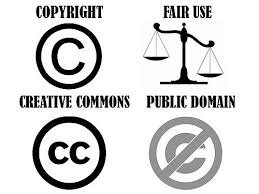
The terms “free” and “open” are often used interchangeably when educational resources are considered. However, these two terms have very different means. The Internet has a plethora of “free” resources available. Instructors often direct students to a website for supplemental information. While this content is free to access, it is likely copyrighted. The instructor would not be able to copy the full text of the webpage and display it somewhere else without consent of the author, even for educational use. An open resource allows the instructor to copy and distribute the content without violating copyright.
In this chapter we will examine the licences that that allow OER to be shared and adapted.
Copyright
Copyright is a form of protection for authors of “original works of authorship” including literary, dramatic, musical, artistic, and certain other intellectual works (U.S. Copyright Office, 2012). The work must be in a tangible medium of expression to qualify for copyright. Ideas or facts from which the creative works are derived cannot be copyrighted. For a limited time, copyright grants certain exclusive rights to the author of the work.
Copyright prevents the “copy” or distribution of materials without the expressed consent of the author. The duration of copyright varies depending on when the work was published. To determine if a work is still under copyright protection apply the following rules:
- All works published in the United States before 1923 are in the public domain.
- Works published after 1922, but before 1978 are protected for 95 years from the date of publication. If the work was created, but not published, before 1978, the copyright lasts for the life of the author plus 70 years. However, even if the author died over 70 years ago, the copyright in an unpublished work lasts until December 31, 2002.
- For works published after 1977, the copyright lasts for the life of the author plus 70 years. However, if the work is a work for hire (that is, the work is done in the course of employment or has been specifically commissioned) or is published anonymously or under a pseudonym, the copyright lasts between 95 and 120 years, depending on the date the work is published.
- Lastly, if the work was published between 1923 and 1963, you must check with the U.S. Copyright Office to see whether the copyright was properly renewed. If the author failed to renew the copyright, the work has fallen into the public domain and you may use it.
(The Board of Trustees of the Leland Stanford Junior University, 2016)
Most resources currently used in the higher education classroom are protected by copyright. Copyright protects the publisher from the free distribution of textbooks. However, it prevents faculty and instructor from providing equal access to required course materials for all students. In some circumstances, copying materials for students is acceptable. In the next section we will look at Fair Use and how it applies to learning resources.
Fair Use
Fair use is a copyright principle based on the belief that the public is entitled to freely use portions of copyrighted materials for purposes of commentary and criticism. For example, if you wish to criticize a novelist, you should have the freedom to quote a portion of the novelist’s work without asking permission. Absent this freedom, copyright owners could stifle any negative comments about their work.
Unfortunately, if the copyright owner disagrees with your fair use interpretation, the dispute may have to be resolved by a lawsuit or arbitration. If it’s not a fair use, then you are infringing upon the rights of the copyright owner and may be liable for damages.
The only guidance for fair use is provided by a set of factors outlined in copyright law. These factors are weighed in each case to determine whether a use qualifies as a fair use. For example, one important factor is whether your use will deprive the copyright owner of income. Unfortunately, weighing the fair use factors is often quite subjective. For this reason, the fair use road map can be tricky to navigate.
In its most general sense, a fair use is any copying of copyrighted material done for a limited and “transformative” purpose, such as to comment upon, criticize, or parody a copyrighted work. Such uses can be done without permission from the copyright owner. In other words, fair use is a defense against a claim of copyright infringement. If your use qualifies as a fair use, then it would not be considered an illegal infringement.
As mentioned above, guidelines for acceptable fair use are subjective. The following list outlines what may be considered fair use for educational purposes.
- Up to 10% or 1,000 words, whichever is less, of a copyrighted text work. For example, you may use an entire poem of less than 250 words but no more than three poems by one poet or five poems by different poets from the same anthology.
- Up to 10%, but not more than 30 seconds, of the music and lyrics from an individual musical work.
- Up to 10% or three minutes, whichever is less, of a copyrighted motion media work—for example, an animation, video, or film image.
- A photograph or illustration in its entirety but no more than five images by the same artist or photographer. When using photographs and illustrations from a published collective work, you may use no more than 10% or 15 images, whichever is less. Or,
- Up to 10% or 2,500 fields or cell entries, whichever is less, from a copyrighted database or data table. A “field entry” is defined as a specific item of information, such as a name or Social Security number in a database file record. A “cell entry” is defined as the intersection at which a row and a column meet on a spreadsheet.
The section on fair use was adapted from The Board of Trustees of the Leland Stanford Junior University, 2016.
Navigating the terms of fair use can be confusing for educators. We want out students to have access to high quality materials without infringing on an author’s copyright protection yet the process is risky. In the next section we will explore works that reside in the public domain, meaning they no longer (or never did) fall under copyright protection.
Public Domain
ABSOLUTELY FREE! MUSIC, TEXT, AND ART!! COPY ALL YOU WANT!! If you saw an advertisement like this, you might wonder, “What’s the catch?” When it comes to the public domain, there is no catch. If a book, song, movie, or artwork is in the public domain, then it is not protected by intellectual property laws (copyright, trademark, or patent laws)—which means it’s free for you to use without permission.
The term “public domain” refers to creative materials that are not protected by intellectual property laws such as copyright, trademark, or patent laws. The public owns these works, not an individual author or artist. Anyone can use a public domain work without obtaining permission, but no one can ever own it. An important wrinkle to understand about public domain material is that, while each work belongs to the public, collections of public domain works may be protected by copyright. If, for example, someone has collected public domain images in a book or on a website, the collection as a whole may be protectible even though individual images are not. You are free to copy and use individual images but copying and distributing the complete collection may infringe what is known as the “collective works” copyright. Collections of public domain material will be protected if the person who created it has used creativity in the choices and organization of the public domain material. This usually involves some unique selection process, for example, a poetry scholar compiling a book — The Greatest Poems of e.e. cummings.
There are four common ways that works arrive in the public domain:
- the copyright has expired
- the copyright owner failed to follow copyright renewal rules
- the copyright owner deliberately places it in the public domain, known as “dedication,” or
- copyright law does not protect this type of work (government).
The Public Domain Section was adapted from The Board of Trustees of the Leland Stanford Junior University
Open licenses
Open licenses are the essence of of OER. A license indicates the how a resource can be used. In education, the most common open license used are Creative Commons Licenses. Creative Commons allows legal sharing of content that would typically be covered under copyright. Creative Commons licenses are copyright licenses that standardize permission to use the work. Six main licenses describe how a published work can be shared.

Attribution CC BY |
This license lets others distribute, remix, tweak, and build upon the original work, even commercially, as long as they credit the author for the original creation. This is the most accommodating of licenses offered. Recommended for maximum dissemination and use of licensed materials. |
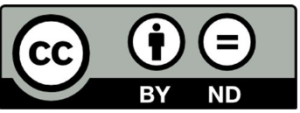
Attribution-NoDerivs CC BY-ND |
. This license allows for redistribution, commercial and non-commercial, as long as it is passed along unchanged and in whole, with credit to the author. |

Attribution-ShareAlike CC BY-SA |
This license lets others remix, tweak, and build upon an author’s work even for commercial purposes, as long as they credit the author and license their new creations under the identical terms. This license is often compared to “copyleft” free and open source software licenses. All new works based on the original will carry the same license, so any derivatives will also allow commercial use. |
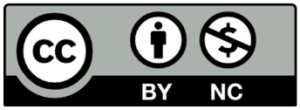
Attribution-NonCommercial CC BY-NC |
This license lets others remix, tweak, and build upon work non-commercially, and although their new works must also acknowledge you and be non-commercial, they don’t have to license their derivative works on the same terms. |
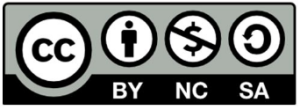
Attribution-NonCommercial-ShareAlike CC BY-NC-SA |
This license lets others remix, tweak, and build upon work non-commercially, as long as they credit you and license their new creations under the identical terms. |
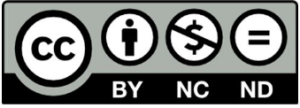
Attribution-NonCommercial-NoDervis CC BY-NC-ND |
This license is the most restrictive of the six main licenses, only allowing others to download your works and share them with others as long as they credit the author, but they can’t change them in any way or use them commercially. |
The chart above was adapted from the Washington State Board for Community and Technical Colleges http://www.openwa.org/module-4/
References:
The Board of Trustees of the Leland Stanford Junior University. (2016) Stanford University Libraries, Copyright and Fair Use. Retrieved http://fairuse.stanford.edu/overview/faqs/copyright-protection/
U.S. Copyright Office. (2012). Copyright Basics. Retrieved http://www.copyright.gov/circs/circ01.pdf
